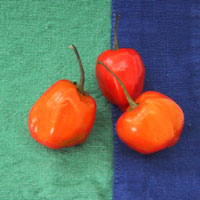Gluten Free
What does following a gluten-free diet mean? That you're embarking on an easy diet with a wide range of health-promoting effects. Instead of dwelling on what you’re giving up, consider that you’re going to enjoy a whole new world of delicious food options to meet your special dietary needs. You’ll be eating seasonally, choosing more fresh fruits and vegetables, focusing on meats, seafood, poultry, legumes, lentils, corn, and rice, and discovering fascinating ancient grains such as quinoa, amaranth, and millet. You’ll be able to eat potatoes, eggs, most cheeses, even chocolate (!)—and enjoy them without guilt because you’ll be taking good care of your body. In fact, you’ll probably end up eating—and feeling—better than ever!
Visit this page for more information about living Gluten Free
---
We carry a large variety of gluten free items, the brands listed below represent just some of the offerings we carry












Raw Foods
“Raw” is all the rage these days, but what does it mean to eat raw? And is it possible to get enough protein and other nutrients while following a raw diet?
Raw foods are those that have not been heated above 108°F to 118°F
Raw, defined
Most raw foodists eat only plant-based (vegan) foods, including vegetables, fruits, nuts, seeds, legumes, and seaweed. Raw foods are those that have not been heated above 108°F to 118°F, depending on who you talk to. The logic behind this is that many of the nutrients in foods are extremely sensitive to heat. This is especially true of the water-soluble vitamins, like the B-vitamins, folate, and vitamin C. As Katie McDonald, a raw food chef and certified Holistic Health Coach in Rhode Island puts it, “The more you do to a food, the less it does for you.”
Raw food advocates also look to the enzyme content of raw foods, saying that cooking destroys delicate enzymes that could otherwise go toward improving the digestion of the foods you’re eating.
---
In addition to our always fresh produce, we carry many more raw foods throughout our stores. Look for these brands and our Raw Foods section for more.



More Diets
Habanero Pepper

Varieties
Habaneros are small, rounded, lantern- or bell-shaped peppers with a pointed end. Like most peppers, they are green when young, while mature peppers may be yellow, orange, or red. These are small peppers, about 1 to 2 inches (2.5–5cm) in all directions, that give little hint of how much heat they contain. The peppers called Scotch bonnets are closely related, and are sometimes mistaken for habaneros; their heat level is similar.
Habaneros can have heat scores that range anywhere from 100,000 to 300,000 Scoville heat units—or more. How high a chile pepper scores on the heat scale is determined by high-performance liquid chromatography measurement of how many parts per million of capsaicin it contains. This figure is then converted into the historic Scoville heat units that signify how much dilution is necessary to drown out the chile’s heat. The heat level of a chile is given as a range because it varies with how and where the pepper was cultivated.
Copyright © 2025 TraceGains, Inc. All rights reserved.
Learn more about TraceGains, the company.
The information presented in the Food Guide is for informational purposes only and was created by a team of US–registered dietitians and food experts. Consult your doctor, practitioner, and/or pharmacist for any health problem and before using any supplements, making dietary changes, or before making any changes in prescribed medications. Information expires December 2025.











